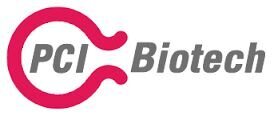Completion of the third group in the intra-tumour light dose escalation part of the ENHANCE study
Lysaker, 20 February 2015 - PCI Biotech reported today that the treatment evaluation of the third group in the intra-tumour light dose escalation part of the ENHANCE study has been completed. ENHANCE is a phase II study of Amphinex® in combination with the cytotoxic agent bleomycin in recurrent head and neck cancer patients. No safety concerns were raised and clear tumour responses with clinical benefits were seen at this light dose level. However, re-growth of tumour in the rim of the treatment area in some patients suggests a need to increase the treatment margins to achieve a durable disease response.A Dose Review Committee (DRC) of clinical experts and company representatives has been established to evaluate the results and provide recommendation for the continuation of the study. The DRC has recommended that an additional cohort of three patients is treated at the same light dose level, but with a modified treatment strategy extending the treatment margins. Patients for the next group are currently being screened and will be treated with Amphinex® as soon as possible.Head and neck cancer has been chosen as there is a clear need for localised treatment in patients with this disease. Results from Phase I clearly demonstrate the potential for treatment with PCI in this patient population.
About head and cancer
Approximately 650 000 new cases of head & neck cancer are diagnosed worldwide each year, and the initial cure rate is 40-60%. 20-30% of these patients will experience recurrent disease, and for many, the current treatment options are sub-optimal due to locally advanced disease or the fact that further treatment will have strong functional or cosmetic consequences, also affecting the patient's quality of life. Median survival for recurrent head & neck patients is 6 - 9 months.Surgery, radiation and chemotherapy, alone or in combination, are the most common treatment options. These are also the tools available to treat recurrent disease. Limitations to radiation treatment, resistance to chemotherapy and structural changes after previous surgery will in many cases imply a less effective treatment with a high rate of associated complications. There is a large unmet medical need for this patient group, both to improve survival and the patient's quality of life.
This information is subject to the disclosure requirements pursuant to section 5-12 of the Norwegian Securities Trading Act.
